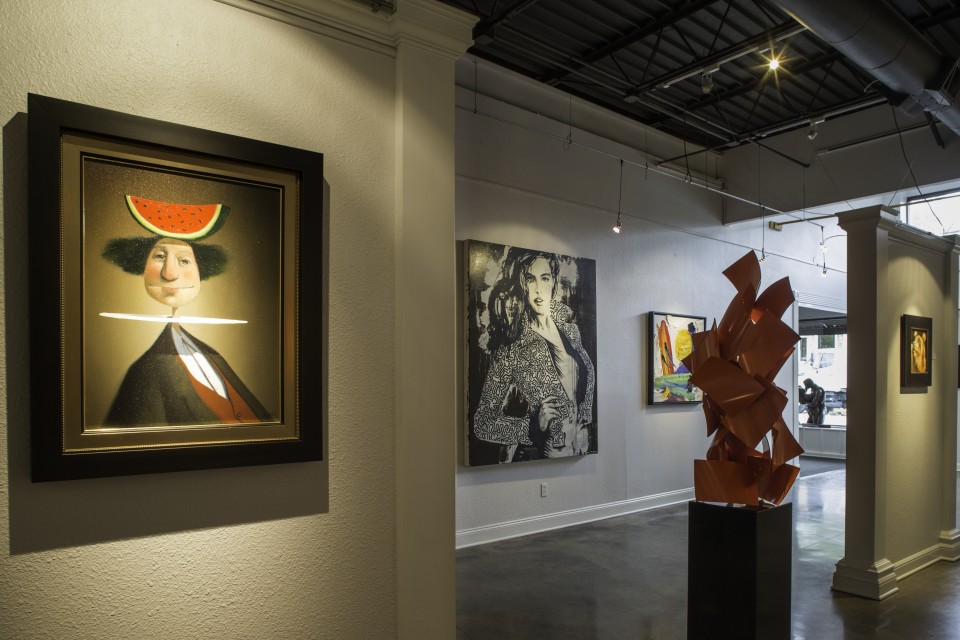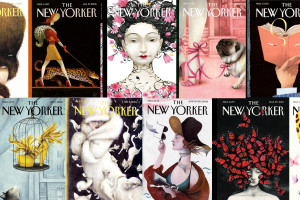Decorate Your Life with Beautiful Art (and Maybe Grow Your Bank Account!)
Historians generally agree that art predates both writing and the “structured” form of speech (as opposed to the incoherent grunts of our ancestors). It is probably therefore the oldest form of human communication, and thru the centuries has been a very powerful social tool, providing spiritual uplift and new ways of seeing the world. (Not to mention illustrating cultural history: anyone who has ever visited a museum can attest to the vast array of scenes available — from grim-faced monarchs to the most minute details of a long-ago family dinner gathering.)
For art’s everyday power, look no further than its ability to trigger the viewer’s subconscious. In that part of the psyche, thoughts, ideas and beliefs are often in their rawest element; a startling or sublimely beautiful piece of art acts on that area, often bypassing socially conventional guidelines. In its best form, art therefore provides a window into the uncommon parts of existence.
So how to bring this life-invigorating potential into our daily lives? Consider an art collection: not having to make a trip to a museum to see exquisite or mind-provoking work, but instead having it in your own possession, makes sense, if affordable. Art can also be a profitable addition to your investment portfolio.
BUYING ART 101
When venturing into the art market, the first question to ask yourself (honest answers only, please!) is “Am I interested in art?” It may seem like a simple question, but the reality is, if you lack passion for the subject, you may end up making poor choices and eventually disliking what you purchase.
Katherine Brimberry, of Flatbed Press & Gallery in Austin, Texas (a city well-known for its creative aptitude), gives some simple advice: “Learn about art and the artists who interest you. Even an informal class is helpful. Look and ask questions. Find what appeals to you. Collecting comes from an understanding or love of something that you find in the work.”
To get started on finding artwork that is irresistible to you, research is key, meaning a visit to galleries and museums is in order. (Easy tip: Museums will give you a history of art, whereas galleries will show what the art world is currently like.) Jill Shroeder, who owns Austin’s GrayDUCK Gallery, advises, “Support your local art scene, visit galleries and museums in your area, and go to artists’ studio tours if your city has them. Connecting with your own creative community is an easy way to meet people and become informed.” Try to also take full advantage of a gallery’s resources by asking questions of the staff, who are knowledgeable in their field, and may have stacks of free periodicals that feature their artists’ work.
Then, read up further by scanning the art section in your newspaper for general insight. The Wall Street Journal, NY Times and LA Weekly feature regular art reviews, and ARTnews is a periodical that will keep you up to date on trends in the art market.
PUT TRENDS ASIDE
Trends come and go, so it is important that you apprise the art you’re purchasing. Research the artists who interest you, “do your homework”, because by supporting their artwork, you are essentially supporting their views and personality, which can impact current and future value of the pieces. Lisa Russell, owner of The Russell Collection Fine Art Gallery in Austin, advises, “If we’re talking about living artists, go talk to them, see what their art is like, and see how people are reacting to it.” Conversely, if you decide to purchase something by going with your gut and letting aesthetics play a large part – i.e., if you simply “buy what you love” — you may bypass the issue of whether to buy work by a trendy artist, whose work may depreciate down the road when they are no longer “it.”
Jill Schroeder reinforced this point: “I think the most important thing to remember is buy what you like — follow your passions instead of what might be “hot” at the time. The enjoyment of buying something you love will last a lifetime.” Susannah Morgan, Assistant Gallery Director at Austin’s Davis Gallery, echoed this thought: “Know what your goals are with regard to buying art. Do you want to buy it for investment purposes, or is a personal connection with the work more important? In the end, if you love it, then buy it!”
A PRACTICAL PRIMER ON INVESTING IN ART
If, overall, your goal is not only to surround yourself with beguiling artwork, but also to cast an eye towards its present or future value, here is some down-to-earth know-how:
The “Right” Artist – When looking for artists, noted and recognized people are typically good for novice collectors, but as with any market, “buy low, sell high” is the investment rule, so up-and-coming artists are ideal if you’ve done your research and their work is attractive to you.
Pricing & Value – The initial price point of a piece is typically decided on by the artist, and the price will rise from there depending on gallery fees, edition number*, and third party influences, etc.
Investment & Returns – Essentially there is no guaranteed return percentage on any art you purchase; masterworks are going to be more stable, yet more expensive. And as for price appreciation, Flatbed Gallery’s Katherine Brimberry advises, “There are works created at Flatbed that have increased in value ten times the amount they first were sold for. Because we create editions of prints, we can see the value increase as the editions sell out or the artist’s career blossoms; as the demand increases, the prints go up in value.”
Maintenance – The cost of owning and maintaining art is also something to consider. In order to preserve value, the physical condition needs to stay pristine. Maintenance, appraisals, restoration, and insurance are all costs to factor in.
Insurance – Insurance is also essential as your collection grows. Companies specializing in the type of art you collect are worth the research, as your homeowners’ insurance is commonly insufficient. Insurance policies for artwork are however typically inexpensive, and benefit the insured with resources for maintenance and protection.
TO SUM IT UP: SENSIBLE ADVICE FROM THE PROS
-
- “Find out if your city has Art Crawls and Studio Tours. Keep a list of artists you like; follow their careers and go to their art openings. They need your support, and through them you will find similar artists who will interest you. ” (Jill Schroeder, GrayDUCK)
- “Buy what you like. Do your research on the art market and the artists who appeal to you. Visit many galleries to find those whose values and goals align with yours.” (Susannah Morgan, Davis Gallery & Framing)
- “My advice is simple: you can start a collection anyhow, any way. It can be by purchasing a piece of sculpture from a street artist or at a small arts and craft fair. Some people think, “In order to have a collection, I have to only buy the masters, I have to only buy emerging artists, or only landscapes.” I really believe, on the other hand, that an eclectic collection is a fun thing to do. It could be a Chagall, hanging next to a Picasso, hanging next to an emerging artist. Also, don’t think that you need to have the artwork match the sofa or rug; your décor is going to change over time. And the other mistake is when people haven’t learned about art themselves, so they end up trying to please designers they have hired to decorate their home, and just let the designer fill up the wall with prints. I certainly wouldn’t let my designer pick out my art; I’d rather see empty walls than a bunch of posters.” (Lisa Russell, Russell Collection)
- “I would repeat that collecting comes from an understanding or love of something special you find in the work. For instance, some collect drawings or prints made by sculptors; they love the sculptor expressing ideas and space in a two-dimensional way instead of with a large sculpture.” (Katherine Brimberry, Flatbed Press & Gallery)
A final word: keep in mind that art is a creative form of expression — pick pieces that speak to you, and that have a connection to your personality, because they will become part of a collection that surrounds you. Out of all the expert advice we came across, one thing stood out: buy what you love. Even if you don’t make a fortune from it in the future, you will have a unique collection that will last a lifetime.
Image courtesy of Russell Collection Fine Art Gallery
TAGS: art
 Interviewer Interview Prep
Interviewer Interview Prep Impactful Mentees
Impactful Mentees Benefits of a Mentor
Benefits of a Mentor Advice for First-Time Managers
Advice for First-Time Managers Overcoming the 18-month Itch
Overcoming the 18-month Itch Dressing for Your Style
Dressing for Your Style Interview Style Tips
Interview Style Tips Women's Stocking Stuffers
Women's Stocking Stuffers Gift the Busy Traveler
Gift the Busy Traveler Father’s Day Gift Guide
Father’s Day Gift Guide Airport Layover Activities
Airport Layover Activities Traveling & Eating Healthy
Traveling & Eating Healthy Travel Like a Boss Lady
Travel Like a Boss Lady The Dual California Life
The Dual California Life Gifts for Thanksgiving
Gifts for Thanksgiving Summer Reading List
Summer Reading List Top Leisurely Reads
Top Leisurely Reads New Year, New Books
New Year, New Books Life Lessons from a Sitcom
Life Lessons from a Sitcom Oprah, Amy or Amal?
Oprah, Amy or Amal?










